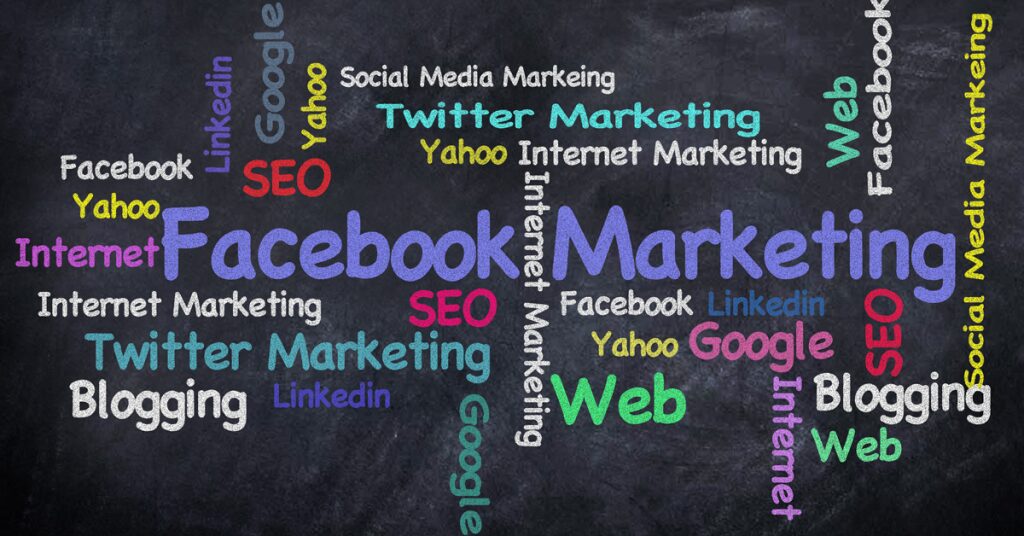Have you ever considered whether social selling is right for you and your business?
In this post, we provide some statistics to prove that the benefits are real.
Many people do not realise that social selling is one of the most neglected marketing techniques at present.
In short, social selling enables businesses to target an audience and connect with networks in order to bring in more customers.
What Is Social Selling All About?
The first thing that comes to mind when you consider selling on social media is receiving unsolicited DMs from brands or seeing advertisements.
It is interesting to note that the most successful businesses on social media don’t always attempt to make sales immediately. Rather, they establish connections and nurture potential customers.
Social selling is a misleading term since it doesn’t involve any direct selling at all. Instead of cold-approaching people with ads, promotional emails, or unsolicited phone calls, you use social media to find prospects, build brand awareness, and build relationships with potential buyers.
It’s fairly easy for any company to get involved in this type of customer engagement.
By having an account for any social network (Facebook, Snapchat, Twitter, Instagram, or LinkedIn), you are already passively involved in social selling.
Why would you want to use social selling?
The volume of people who use social media answers this question: currently, 3.2 billion people use social media! This global penetration is 45%.
It would be a mistake if you weren’t taking advantage of such a large potential customer network for your business.
The method is effective, and that’s that.
Let’s evaluate its performance.
A look at the numbers.
- 84% of C-level executives use social media to make purchasing decisions.
- Individuals who are engaged in social selling outsell those who are not, by 78%.
- 31% of B2B professionals say that social selling has allowed them to build deeper relationships with clients.
- More than 10% of social sales representatives have closed 5 or more deals because of their active presence on social media.
- 76% of buyers are prepared to engage in social media conversations with potential providers.
- B2B buyers are open to working with a salesperson who is a renowned industry thought leader, provided that he or she is accessible and approachable.
- Customer loyalty is driven by a salesperson’s ability to provide unique insights, which can now be obtained through social media.
- 71% of all salespeople and 90% of top performers are already using social selling tools. That proportion increases with the younger demographic.
- It is reported that 78% of Millennials use social selling tools.
- 73% of Millennials believe that social selling is crucial to their company’s success.
- Sales quotas are achieved 51% more frequently by social sellers.
- A company that has a consistent social selling process is 40% more likely to achieve revenue goals than one that does not.
- Almost 50% of social media traffic for B2B comes from LinkedIn
- 33% of users prefer contacting businesses via social media rather than using a telephone.
- 39% of businesses said that social media was responsible for significantly reducing the time needed in researching potential new leads.
Is Social Selling and Social Media Marketing the same thing?
The simple answer is no.
Social media marketing is the practice of marketing online using social media platforms and techniques. This may include creating branded videos on Snapchat, using Facebook Ads, or creating sponsored posts on LinkedIn, for example.
The objective of social media marketing is usually to convert people there and then, whereas Social selling focuses more on lead generation and nurturing, as we covered earlier.
However, in order to get shoppers to become customers, social selling and social media marketing go hand in hand.
Let’s see at some vital social media selling statistics to discover how social media marketing can benefit your enterprise.
Is Social Media Marketing Effective?
- According to 73% of marketers, their social media marketing efforts have been somewhat effective or very effective for their business.
- Using social media for lead generation outperforms outbound marketing by 100% in lead conversion rates.
- Spending at least 6 hours on social media per week is correlated with obtaining more leads for 66% of marketers.
- 70% of business-to-consumer marketers have gotten their customers through Facebook.
- In terms of mobile ad revenue, Instagram generates around $4 billion annually.
- Retargeting ads can be used on Facebook to target 98% of non-returning users and turn them into customers.
- Social networks earned an estimated $8.3 billion in 2015 from advertising.
- You can see that social media marketing is effective. Social media marketing just keeps growing. You must get on board if you have not done so already.
Why organisations must engage in social media marketing.
- 71% of consumers who have had a positive experience with a brand on social media are likely to recommend the brand to their friends and family.
- 90% of all marketers say that social media marketing has increased their business’ exposure.
- 9 out of 10 retailers are using at least two social media platforms.
- 84% of CEOs and VPs reported using social media to help make
- purchasing decisions.
- Fifty million small businesses currently use Facebook Pages to connect with their customers.
- Brands that interact with customers on social media report that customers spend 20%–40% more money on those brands.
- 48% of people aged 18-29 say they made a purchase after seeing a social media ad for it.
- When a brand’s Twitter account replies to a Tweet, 77% of Twitter users say they feel more positively towards the brand.
- 83% of Millennials say they either buy online or in-store after seeing a product on Facebook.
- 93% of Pinterest users use the platform to make purchases or plan future purchases.
- 71% of consumers who have had a positive experience with a brand on social media are likely to recommend the brand to their friends and family.
Getting Started with Social Selling.

Firstly, you need to set up a company account on the social media platforms your audience frequents.
It is advisable to begin on Facebook, as it has the greatest number of users. Other platforms to consider would be Twitter, LinkedIn, Instagram, Pinterest, and Snapchat.
Once you are set up and ready to make a start, check out the following few pointers:
Engage with your audience.
You should engage with your audience.
Increasing your brand presence depends on the level you engage with people.
Engaging can be anything from liking and commenting to personally messaging people to let them know you enjoyed their last piece of content.
Be unique, don’t copy and paste the same comments on all posts, and don’t pay for automated liking and commenting tools. Really, spend time on social media and be as genuine as possible.
People post all kinds of things on social media.
People love to complain on social media about their daily lives. You might be able to take advantage of their grievances by providing them with what they need.
It’s likely that your followers will share information about what they want and need. Check messages and mention histories for suggestions and pain points. Solving these issues for individuals will provide you with a natural chance to sell socially.
Gradually Build up Relationships.
Maintaining contact with new connections over time is what creates relationships. If you have anything worthwhile to offer or contribute to them, let them know. They will appreciate it.
Keep an eye on what they’re posting, occasionally comment on their posts, and always give them a thumbs up. As long as you don’t go overboard with affection, they’ll be the ones to refer you to a friend or purchase your product if they need it.
Don’t neglect your existing customers.
Many businesses focus solely on creating new connections when employing social marketing. However, it is crucial to continue building a connection with your existing consumers as well.
It can cost five times more to acquire a new customer than to keep an existing one, and as long as you keep building that bond, customers who have purchased from you once are more likely to buy again.
Make sure to interact with your existing customers on social media platforms. If your customers aren’t following you on social media, encourage them to do so.
You can embed social media feeds on your website using plugins.
You can quickly add an Instagram, Facebook, Twitter, or YouTube feed to any location on your WordPress site using plugins such as Smash Balloon.
Your customers can then interact with your social media content from your own website, which also makes it easier to boost engagement and nurture relationships with existing clients.
Conclusion.
Has this article convinced you that social selling and social media marketing are worth trying out for your company?
It’s important to remember that social selling and social media marketing are different, but together, they may result in extremely high conversion rates for your company.
If you would like to take advantage of 30 days of free, managed Social Media management, including curated content, with no obligation and no credit card required, then click the button below now and see how we can help your business get more attention.

